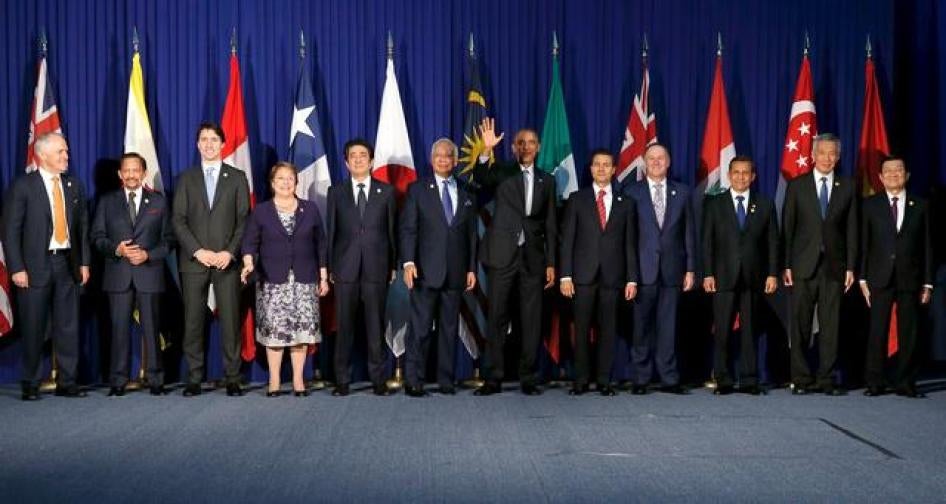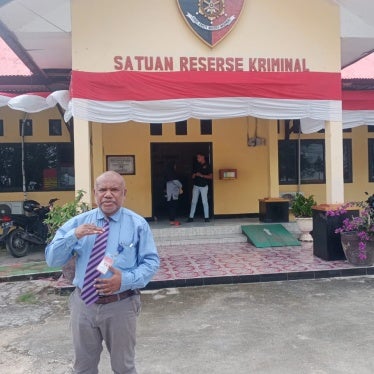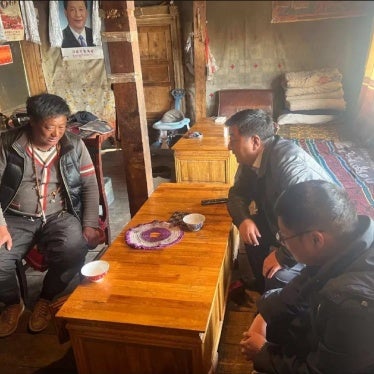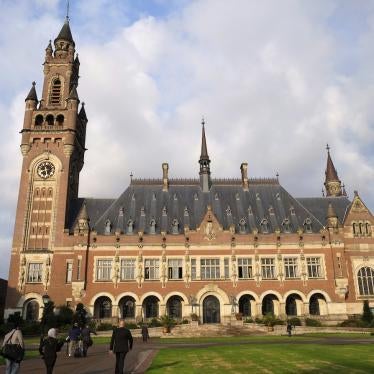- What is the Trans-Pacific Partnership?
- What are the main human rights issues relating to the TPP?
- What are the primary labor rights issues?
- Will the TPP require countries with poor labor rights records to reform?
- What are the implications for the right to health?
- How will the TPP affect the rights to free expression and privacy?
- Can the TPP’s human rights problems be fixed?
- What would a more human rights-friendly TPP look like?
1. What is the Trans-Pacific Partnership?
The Trans-Pacific Partnership (TPP) is an economic and trade agreement among 12 Pacific Rim countries. The TPP aims to reduce and eventually eliminate tariffs and other market barriers to most goods, services and agriculture. It also addresses several areas not comprehensively addressed by the World Trade Organization’s multilateral trading system, such as direct investment, labor and environmental standards, and state-owned enterprises. Proponents say it will create precedents for consistent global trade rules and result in greater economic integration and growth throughout the Asia-Pacific region as additional countries become members.
The text of the agreement, published on November 5, 2015, after years of negotiations, consists of 30 chapters plus annexes. The countries that signed the agreement are Australia, Brunei, Canada, Chile, Japan, Malaysia, Mexico, New Zealand, Peru, Singapore, Vietnam, and the United States.
The TPP will enter into force 60 days after all 12 signing countries ratify the agreement (or alternatively, 60 days after at least 6 of the original signatories have ratified the agreement, if those signatories together produce a combined gross domestic product (GDP) equal to 85 percent of the combined GDP of the original 12 signatories).
As described below, the TPP’s entry into force will trigger various legal and policy requirements and, in some cases, require the national implementation of legislation. The TPP will require participating countries to lower tariffs on specific goods and services. Most members will also need to reform parts of their domestic laws and policies relating to labor rights, financial services, and intellectual property and patents, among other areas.
Because of serious systemic labor rights problems in certain member countries, the United States negotiated additional bilateral agreements (known as Consistency Plans) with Vietnam, Malaysia, and Brunei that must be implemented to obtain TPP benefits with the US.
2. What are the main human rights issues relating to the TPP?
In the abstract, Human Rights Watch takes no position for or against free trade agreements. However, the agreement raises serious human rights concerns, specifically with respect to labor rights, intellectual property, the right to health, and free expression and privacy rights on the Internet.
Human Rights Watch and others have expressed concerns that the agreement’s labor chapter and associated bilateral agreements will not adequately safeguard labor rights in TPP countries with poor labor rights records, notably Vietnam, Malaysia, and Brunei. Although the Consistency Plan agreements are important to motivate much-needed reform, the extent to which they will be implemented or enforced is unclear, particularly given poor enforcement of labor rights provisions in other trade agreements and under each country’s domestic laws.
Human Rights Watch and others are also concerned about the intellectual property chapter’s provisions on patents, which will reduce access to health care in poorer countries by increasing costs for life-saving medicines. And the provisions on copyright enforcement in the intellectual property chapter pose a serious risk to online freedom of expression.
3. What are the primary labor rights issues?
The labor chapter requires all TPP members to meet core international standards on labor rights as set out in International Labour Organization (ILO) regulations. Additionally, as mentioned previously, the US has negotiated separate Consistency Plans with Vietnam, Malaysia, and Brunei.
A major concern about the TPP’s labor chapter is that it can only be enforced by governments. The TPP empowers member countries to bring legal disputes against other member countries for violating the labor chapter’s terms. But while unions, labor advocacy groups, and trade federations could lobby or petition the US or other governments to take formal action to enforce the TPP’s provisions, they will not be able to file a complaint under the agreement. This contrasts sharply with investors and corporations, who can bring dispute settlement proceedings against member countries under the agreement’s provisions on Investor-State Dispute Resolution (ISDR) mechanisms.
The United States typically files labor complaints only after trade unions or advocacy groups have filed formal petitions, followed by significant lobbying from such groups to take action. Dozens of labor complaints have been brought under various trade agreements since 1991, mostly under the North American Free Trade Agreement (NAFTA). However, because of procedural hurdles, lengthy delays, opposition from US business interests, or lack of political will, United States action on workers’ rights complaints in existing trade agreements has been slow and inadequate.
The example of Guatemala, which ratified the Central American Free Trade Agreement (CAFTA) in 2006, highlights these problems. In 2008, Guatemalan and United States labor groups began petitioning the United States to bring a trade tribunal case against Guatemala for its failure to uphold core standards in CAFTA’s labor chapter. Seven years later, in 2015, the United States finally did so. This was the first and only time it has ever brought a case against another country for a labor chapter violation under a free trade agreement. According to labor groups, more than 70 union organizers have been killed in the decade since Guatemala signed the agreement, yet it will likely take years for the Guatemala case to be decided. In the interim, all CAFTA benefits remain in effect.
In the absence of United States action, enforcement of the TPP labor chapter is highly unlikely to occur. No other member of the TPP has ever been known to bring legal trade cases to enforce labor chapters in other economic agreements.
4. Will the TPP require countries with poor labor rights records to reform?
The United States negotiated separate labor side agreements with Vietnam, Malaysia, and Brunei that are a unique and significant step in efforts to protect labor rights in trade agreements. These Consistency Plans require the three governments to implement specific legislative and regulatory reforms and increase enforcement capacity before they can enjoy TPP trade benefits with the United States. Unfortunately, no such Consistency Plans were negotiated with other TPP members, such as Mexico and Peru, even though each has been subject to complaints under NAFTA and the US-Peru Free Trade Agreement.
The US-Vietnam Plan for the Enhancement of Trade and Labor Relations requires major reforms to Vietnam’s legal system on labor issues. It also obligates the government to close administrative detention facilities that use forced labor. More importantly, it requires the government to allow larger labor federations to come into being within five years. If after five years Vietnam has not allowed federations to form, the US can retaliate unilaterally by re-imposing tariffs or suspending ongoing tariff reductions. This creates an incentive for Vietnam to meet this key obligation. However, because the tariff reductions or suspensions are not automatic, a future US administration may decide not to implement them for a variety of diplomatic or economic reasons. The Consistency Plan also creates a Labor Expert Panel that is supposed to meet regularly to monitor Vietnam’s compliance with the TPP’s labor chapter and the Consistency Plan and make recommendations to the US and Vietnam. It is a tripartite body comprised of representatives from the US and Vietnam and chaired by an independent outside labor expert from the ILO. However, the panel has no formal powers or capacity to enforce the terms of the labor chapter or the Consistency Plan.
Other enforcement provisions of the TPP are weak or vague. While the Consistency Plans require implementation of legal reforms, enforcement of labor laws, and general institutional capacity building, gauging compliance will require subjective assessments by the US that may take years to carry out and face obstacles arising from foreign policy objectives, commercial interests, and other political considerations.
5. What are the implications for the right to health?
Several health and humanitarian groups, including MSF, Oxfam, and Health Gap, have raised concerns about provisions in the TPP’s intellectual property chapter that will enhance or extend patent and copyright protections for medicines, which in turn will lead to higher healthcare costs. The TPP will obligate most member countries to extend existing patent monopolies, lengthening the time before more affordable generic drugs come on the market. The new rules also expand the circumstances under which companies can be given new patents merely by making slight modifications to existing medicines, a practice known as “ever-greening.”
The TPP also mandates that governments restrict competitor generic drug producers and regulatory authorities from using existing clinical data on biological medicines’ safety and efficacy, even in the absence of patents. That means that even when a medicine’s patent has expired, a drug company may continue to own the data that shows that it is effective and safe. This will compel generic drug producers seeking to produce generic drugs to undertake duplicative and unnecessary trials to re-prove findings that have already been scientifically demonstrated. In practice, the rules will deter generic drug companies from producing protected medicines, thereby extending the period before more affordable versions become available.
Pharmaceutical companies argue that monopoly protections need to be enhanced to spur research and development on life-saving drugs. However, drug companies already enjoy extensive monopoly benefits under existing intellectual property regimes, and a large amount of research into life-saving drugs is spurred not by profit motives but by government grants and tax incentives. In practice, the TPP’s intellectual property provisions will limit or undermine developing countries’ policy options for obtaining lower cost medicines, in particular those under the Trade-Related Aspects of Intellectual Property Rights (TRIPS) Agreement. Once the TPP comes into force, public health systems, insurance providers, and patients will have to spend more to purchase life-saving drugs. In poorer countries, with limited health resources, patients who need life-saving or life-extending drugs may not receive them, resulting in those people dying or becoming sick earlier and more rapidly.
The TPP’s patent and other monopolistic protections for medicines cannot be justified on public health grounds. Not only are public health interests harmed by the TPP, those provisions may create the standards for future trade agreements and affect many more patients in the future.
6. How will the TPP affect the rights to free expression and privacy?
The copyright enforcement provisions of the TPP’s intellectual property chapter have several problematic features that undermine online freedom of expression. While they will require member countries to put in place new mechanisms to enforce the rights of copyright holders, these mechanisms will not adequately protect freedom of expression and other rights, leaving considerable room for politically motivated abuses. For example, member countries will be required to permit copyright holders to compel Internet companies to take down online content that allegedly infringes copyright without a prior judicial or other independent determination or oversight. In practice this could allow political actors to abuse the system by alleging copyright infringements in order to censor dissenting voices. If Internet companies like YouTube or Facebook refuse to implement these so-called notice-and-takedown systems, they risk being held liable for any copyright infringement on their services.
Many of the TPP’s provisions ostensibly mirror the framework for copyright enforcement in the United States under the Digital Millennium Copyright Act (DMCA) of 1998. However, the TPP omits many of the safeguards in US law that are designed to protect the rights of users against abuse of such systems. For example, US law requires Internet companies to restore content if the user who posted it objects under certain circumstances, but this safeguard appears to be optional under the TPP. US law also provides exceptions for fair use of copyrighted material (for example, for news commentary, criticism, parody, or research), which is not required under the TPP. Concerns about abuse are not theoretical: researchers have documented that governments and powerful private actors have abused the DCMA to silence criticism. For example, Ecuadorian authorities have used US copyright law to take down videos documenting police abuse or criticizing government policy from social media sites.
However, under the TPP member countries are only asked to “endeavor to achieve an appropriate balance” with respect to Internet, media, educational material or other content. This is highly problematic in countries that have poor records on Internet freedom such as Vietnam, Malaysia, Singapore, and Brunei. Under the TPP, countries must also enact laws banning circumvention of technical barriers (called “technological protection measures”) put in place to prevent copyright infringement. Such provisions could lead to penalties for individuals who copy a DVD they already own to their computer or who install unauthorized software on their cell phone (through “jailbreaking”). Governments can create exceptions, but are not required to do so.
The TPP also requires legislation to create criminal liability in certain circumstances without sufficient safeguards. It also allows for destruction of computers and other equipment used to infringe copyright or circumvent technical protections, heightening concerns about the potential for abuse of the agreement’s copyright provisions.
The TPP’s electronic commerce chapter raises complex questions about its impact on the right to privacy. The chapter limits governments’ ability to impose data localization regulations, which require companies to locate data servers within a country’s territory or prohibit transfer of user data outside a country’s borders. Such requirements can be problematic where they facilitate law enforcement access to user data in countries where privacy is not well protected or where law enforcement uses such data to identify and target government critics. Limiting data localization requirements in this way can allow email or social media companies to store user data in jurisdictions where surveillance powers are more appropriately regulated.
This same provision, however, could undermine the ability of member countries to enact data protection laws to regulate commercial collection and use of personal data and safeguard privacy. For example, European Union member states have limited cross-border data transfers as a mechanism for enforcing data protection rules imposed on US-based Internet companies since data protection is not adequately regulated in the US. While governments can adopt measures that are inconsistent with this TPP provision, if challenged they may bear the burden of showing that data protection measures aren’t “arbitrary or unjustifiable discrimination.”
Finally, the TPP directs member countries to adopt a legal framework for the protection of personal information. However, this can be done through self-regulation by industry, which renders the provision toothless.
7. Can the TPP’s human rights problems be fixed?
It is currently not feasible for all 12 signatory countries to renegotiate the TPP. In practice, however, as of the time of writing the agreement is still under a “legal review for accuracy, clarity, and consistency,” and small sections of text can be changed up until the time of final signature of the document, which is expected in early February 2016. The bilateral agreements, including the Consistency Plans, can still be renegotiated before the final text is signed, and possibly even afterwards. Moreover, if one or more of the TPP governments with the largest economies, notably the US or Japan, do not ratify the agreement, it could lead to the agreement’s overall renegotiation.
8. What would a more human rights-friendly TPP look like?
Labor rights
A more rights-friendly agreement would require each TPP member to achieve fundamental and deliverable labor rights benchmarks first (such as necessary legal reforms, full freedom of association for workers, ending systems of forced labor) for the agreement to come into force, and then make benefits in the agreement contingent on the country demonstrating implementation of reforms and enforcement on an ongoing basis. For each set of benchmarks met, a set of benefits under the agreement would be phased in.
Another key improvement would be to ensure effective enforcement by creating a dispute resolution system in which trade unions, labor federations and advocacy groups acting on behalf of workers would be empowered to seek remedies from TPP member countries similar to the existing process available to investors and corporations under the agreement. This would end the TPP’s double standard for corporations and workers.
Creating more effective and streamlined provisions for the filing of complaints would enhance protections for workers and labor organizers at risk.
Right to health
Mitigating the problems of access to life-saving drugs for all under the TPP requires revising the agreement’s provisions on patent and copyright protections for medicines. This would allow TPP members to maintain the flexibilities agreed upon under the TRIPS Agreement that allow World Trade Organization members to protect public health by promoting access to medicines for all. TPP countries could also require companies to create more effective mitigation schemes and allow poorer counties to exempt themselves from the rules based on their economic condition and the status of their public health systems.
Online freedom of expression and privacy
A rights-friendly agreement would incorporate far stronger safeguards for user rights on the Internet, including by requiring TPP members to create exceptions and limitations to copyright and removing overbroad penalties for circumventing technological protection measures. It could also strengthen requirements for personal information protection regimes and ensure that provisions promoting cross-border data flows do not undermine or hinder such regimes.








